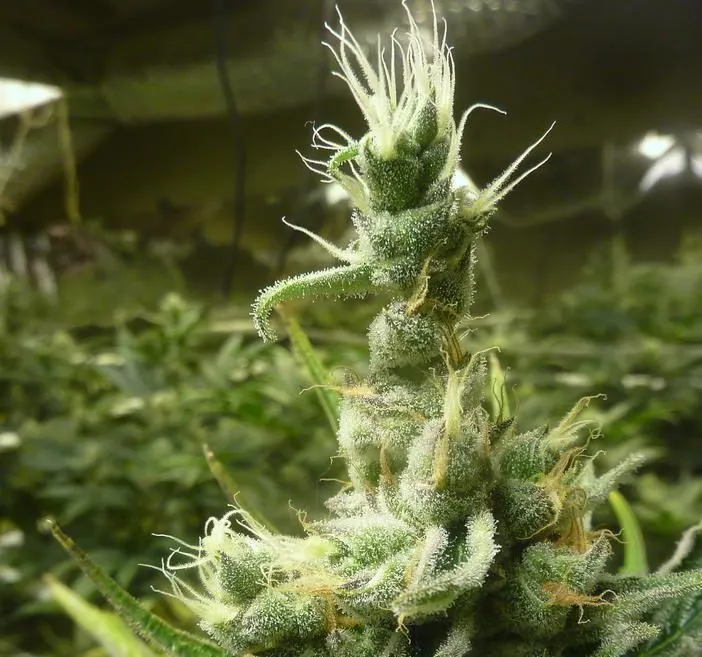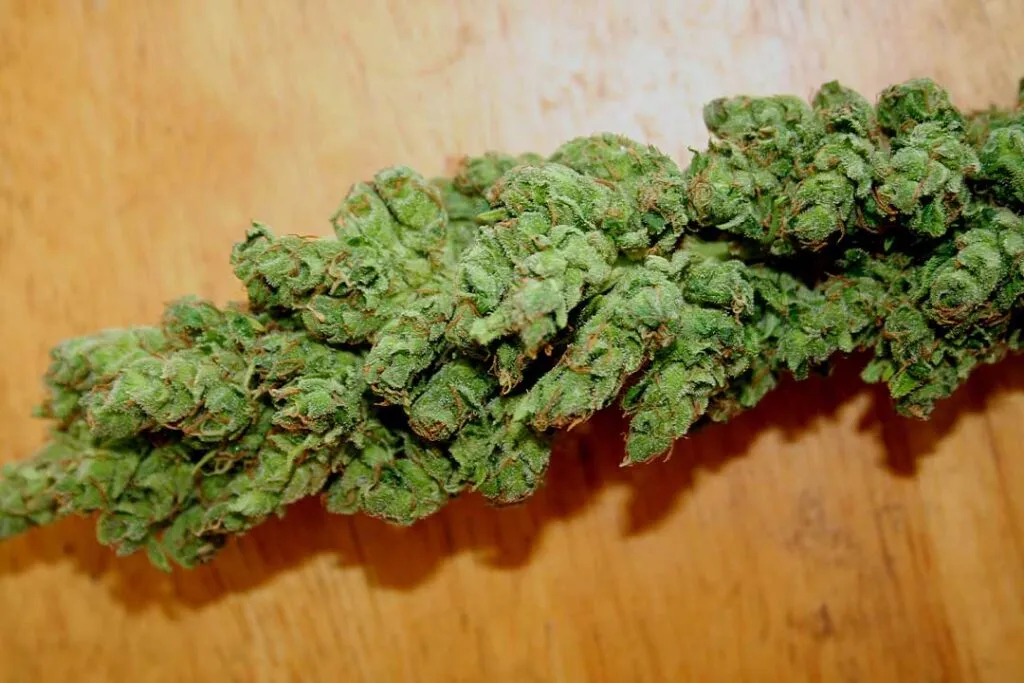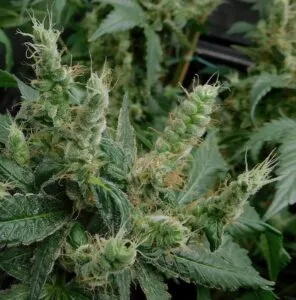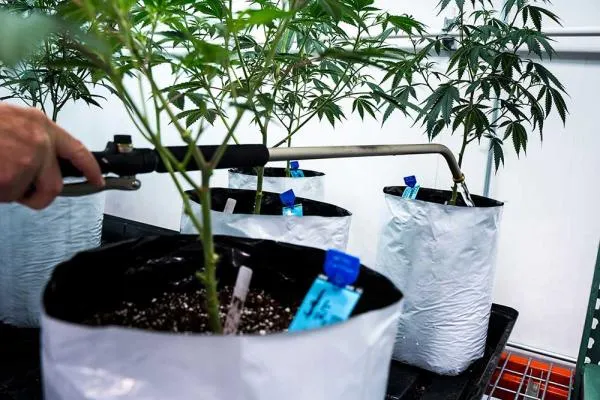Most of the time, cannabis buds grow in a conical shape that are even throughout. Other times though, those same buds will foxtail, which can be indicative of genetics or bad growing techniques.
What is a foxtail?
A cannabis foxtail involves the anatomy of a marijuana plant. It starts with the stem and from that stem, calyces grow. Each calyx is a potential site for a bud to grow. When the marijuana plant has normal genetics and has been grown using proper techniques, buds will grow right beside each other. Each bud will grow straight and be shaped in a cone shape. While buds will still typically grow in bunches, each will be separate.
However, when cannabis begins to foxtail, those calyces will grow on top of each other. The buds then, will also grow on top of each other. This causes the buds to grow in odd shapes. They appear elongated and as though they are growing in clumps. These buds will look longer than others. It actually does look like a foxtail.
When cannabis foxtails, it can make it more difficult to grow. It will also leave less of the plant that can be used for bud sites, which can reduce the harvest. And anyone that looks at the buds, even after they’ve been harvested, will notice the difference.

Why do some marijuana plants foxtail?
Having a foxtail on your marijuana plant isn’t the worst thing that could happen. One will not kill the entire plant, as other growing problems will. And while it can be corrected, the reason for the foxtail first needs to be identified.
This is because cannabis plants sometimes foxtail due to genetics. Purple strains, and the Cole Train strain, are known for being prone to grow in irregular shapes. When the shape of the buds can be traced back to genetics, foxtailing is likely not a problem. If each bud on the plant is foxtailing, it’s likely the plant’s genetics. This type of foxtailing is nothing to worry about. It can be considered good foxtailing.
However, there are bad types of fox tailing as well. Marijuana light stress is one of the most common factors that can contribute to bad fox tailing. This is also known as cannabis heat stress. This type of foxtailing is most often caused when plants have been placed too closely to their light source. Plants grown under LED or high-powered HPS lights are most at risk for this type of foxtailing.
When buds are placed too closely to the light source for a long period of time, a foxtail may appear. Worse than that however, it can also cause the buds to lose potency.

How to Avoid Marijuana Foxtailing
Foxtailing often happens when plants are placed too closely to the light source. It would make sense then that simply moving them could help correct the problem. And in fact, it may. Plants grown under LED lights should be kept at least 40 centimeters away from the light source. Those grown under HID lights should be placed at least 60 centimeters from the light.
Heat problems can also cause a plant to foxtail. It’s important to consider the temperature inside the grow area.
When the lights are on, the temperature inside the grow space should be around 23 degrees Celsius, or 74 degrees Fahrenheit. When the lights are turned off, it should be anywhere from five to seven degrees cooler. If the grow space is too hot, an air conditioner or venting capacity can be used for cooling purposes. Growers that can’t control the temperature should switch to cooled lights rather than using HPS.
The problem with foxtails could also come from the variety of marijuana that’s being grown. Sativas are best suited for growing outdoors. This type of marijuana will likely experience more stress when grown inside. Adding a B-52 supplement could help to lower stress levels. Also, plants should have plenty of space around them. This will lower the amount of stress the plant experiences.
Conclusion
Seeing a bud that begins to develop a foxtail can be stressful for any grower. These simple tips can prevent them from forming. Following them can help any grower combat the foxtail and get the perfect buds they were hoping for.









